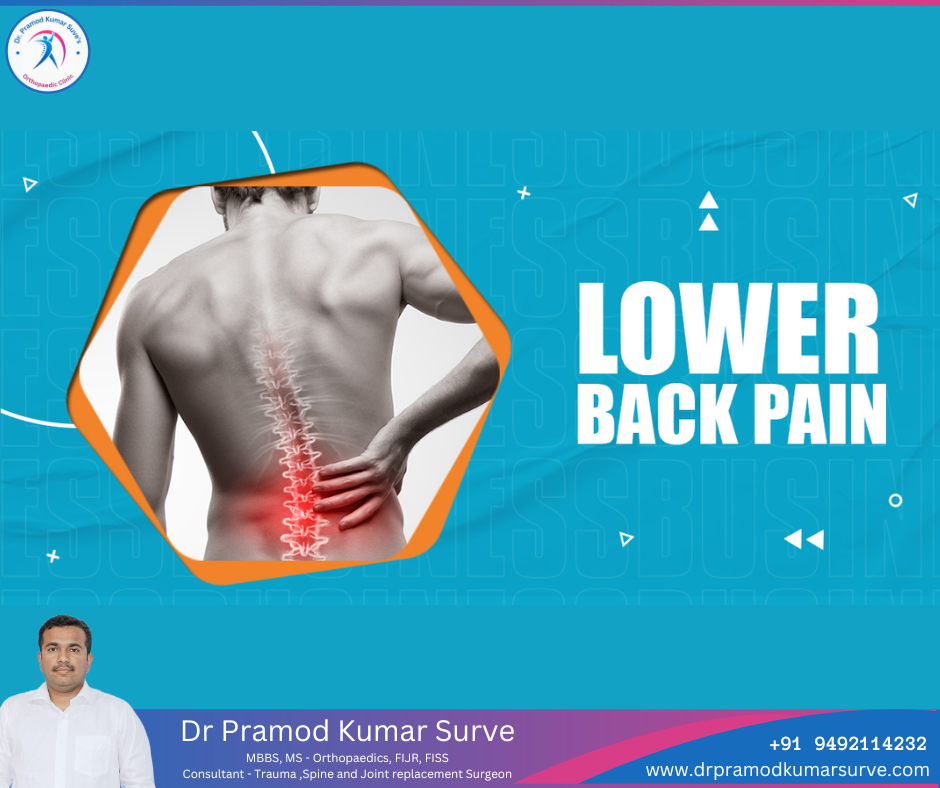Are you suffering from a feeling of pressure or pain in the lower part of your back? A common cause may be a musculoskeletal issue, but there are other causes of pain in the lower back that we will look at, along with ways in which we can manage pain in the lower back.
Lower back pain is very common, and most people, for one reason or another, will suffer from some degree of lower back pain during their lifetime. In fact, a study that was done in 2020 identified pain in the lower back as the most frequently cited reason for missing work. Although, in general, most lower back pain will be the result of injury, there are other medical conditions that can also give rise to this sort of pain.
Commonly, people between the ages of thirty and fifty will have their first brush with back pain as a direct result of the changes our bodies go through as we age. This change with age is because as we advance in years, the fluid that acts as a cushion between the spine and the vertebrae reduces. When this happens, the discs have less cushioning and are more easily prone to irritation. Along with that, muscle tone in the back also reduces with age, making the back more susceptible to injury.
For this reason, it makes a lot of sense to keep your back muscles strong to keep back problems at bay.
The causes of pain in the lower back
There are many different reasons why we experience lower back pain
There are various causes of pain in the lower back, and that includes some underlying health conditions.
1. Strains and sprains of the muscles in the back.
The ligaments and the muscles in the back are prone to stretching or even tearing if we exercise them excessively. As well as this, sudden movement can also give rise to a strain or a sprain. The symptoms of this type of back problem will be lower back stiffness, pain, and, quite commonly, muscle spasms.
2. Herniation of the disc
Our discs are susceptible to injury, a risk that increases as we get older. The disc’s outer parts can herniate or tear. This condition is also referred to as a ruptured or slipped disc. In this condition, the cartilage that surrounds the disc will push against the nerve roots or the spinal cord, and the cushioning that is normally between the vertebrae in the spine will be extended. The result can be the roots of the nerve being squeezed at its exit point from the vertebrae and spinal cord.
This condition usually arises from trauma or from degenerative changes as we get older. If no treatment is given, then the pain experienced from a herniated disc will generally subside after around six weeks.
3. Sciatica
The nerve that connects the legs to the spine is called the sciatic nerve.
If a disc that has become herniated starts to press on the nerve, the condition that arises is called sciatica, and the symptoms will be a burning-like feeling in the leg or foot or a tingling feeling.
4. Stenosis of the spine
The term “spinal stenosis” refers to the fact that the spaces in between the spine’s vertebrae have narrowed. This has the effect of putting more pressure on the spinal nerves and the spinal cord. This condition is linked with disc degeneration in between the vertebrae of the spine. This results in the spinal cord or nerve roots being squeezed by soft tissue or bony spurs. This pressure may cause a patient to feel:
- Weakness
- Cramping
- Numbness
These sensations might occur at other sites in the body, and a lot of people who suffer from spinal stenosis report feeling worse when they walk or stand.
5. Curvature of the spine
Several of the conditions causing curvature of the spine, which include lordosis, kyphosis, and scoliosis, are often conditions that the sufferer is born with and that will normally be diagnosed during their childhood. Having a curvature of the spine can cause poor posture and pain because of the strain that it places on the:
- Musculature and tendons
- The ligaments
- The vertebrae
It should be noted, however, that some people with curvature of the spine have no symptoms at all.
Lower back pain: other Other Conditions
There are, of course, other conditions that cause pain in the lower back, and they usually come with other symptoms. These are some of the conditions that give rise to pain in the musculoskeletal areas:
- Fibromyalgia is a long term condition that features tenderness and pain in the muscles, joints, and tendons.
- Arthritis is a condition characterized by joint inflammation.
- Spondylosis: This condition is another form of arthritis and is a degenerative disorder that can lead to the loss of normal function and structure in the spine, although getting older is usually the primary cause of this.The rate of degeneration and the location of that degeneration will be different from individual to individual
- Spondylitis: This is an autoimmune disease, a type of arthritis that causes inflammation.
There are some other conditions that may lead to lower back pain, and those include:
- Kidney infections and other bladder and kidney problems
- Endometriosis and pregnancy in women
- Fibroids in the uterus
- Cysts in the ovaries
- Infection of the spine
- Misalignment of the spinal cord
- Spinal cord cance
